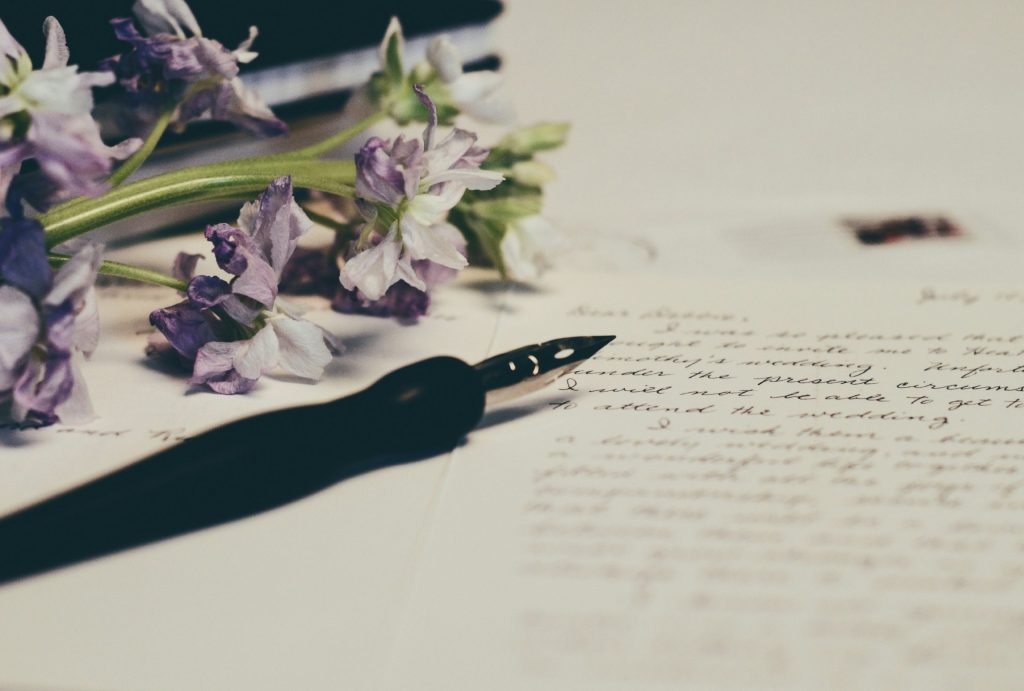Grant Writing Basics
Understanding the fundamentals of grant writing is essential for individuals or organizations looking for financial support. This section highlights the importance of grant funding and outlines the grant writing process.
Importance of Grant Funding
Grant funding serves as a vital resource for various projects, initiatives, and organizations. Here are some reasons why securing grant money is significant:
| Benefits of Grant Funding | Description |
|---|---|
| Financial Support | Grants provide necessary funds to cover costs related to projects, research, or initiatives. |
| No Repayment Required | Unlike loans, grants do not need to be paid back, making them an attractive funding option. |
| Credibility | Receiving a grant can enhance an organization’s credibility and public image. |
| Opportunity for Growth | Grants may allow organizations to expand their programs or launch new initiatives. |
| Community Impact | Many grants are aimed at community development, education, and health, leading to positive societal change. |
For those looking for specific types of grant money, resources like grant money for community projects or grant money for nonprofits can provide valuable opportunities.
Understanding the Grant Writing Process
The grant writing process involves several key steps. Understanding these can help streamline efforts to secure funding. Here are the essential stages involved:
| Step | Description |
|---|---|
| 1. Identify Funding Sources | Research potential grants that align with the project’s mission and goals. Consider resources such as latest grant money opportunities. |
| 2. Prepare Required Documents | Gather necessary documentation and information to support the proposal, such as budgets and organizational information. |
| 3. Write the Proposal | Craft a compelling proposal that clearly articulates the goals, objectives, and expected outcomes of the project. Utilizing grant writing templates can assist in organizing thoughts. |
| 4. Submit the Application | Follow the application guidelines provided by the grant-giving agency to ensure a complete submission. |
| 5. Follow Up | After submission, it may be useful to reach out to the grant provider for any updates regarding the application status. |
For information on applying specifically for grants, refer to our guide on how to apply for grant money.
By grasping the importance of grant funding and understanding the grant writing process, individuals and organizations can increase their chances of successfully obtaining necessary financial support.
Preparing for Success
To effectively secure funding, it is vital to lay a solid groundwork before starting the grant writing process. This involves thoroughly researching available opportunities and preparing a strong proposal foundation.
Researching Grant Opportunities
The first step in preparing for success in grant writing is identifying suitable funding sources. This process requires diligent research to ensure that the selected grants align with the goals of the organization or project. Potential funding sources can include government programs, private foundations, and corporate sponsors.
Here is a table summarizing types of grant money opportunities available:
| Type of Grant | Description |
|---|---|
| Federal Grants | Funding from government agencies for various projects. |
| Foundation Grants | Money provided by non-profit foundations. |
| Corporate Grants | Funding from businesses aimed at community support. |
| State and Local Grants | Financial support from state and municipal governments. |
| Educational Grants | Funding specifically for educational initiatives. |
| Non-profit Grants | Financial resources aimed at supporting non-profit organizations. |
For more specific opportunities, individuals can explore areas such as grant money for small businesses or grant money for community projects.
Building a Strong Foundation
Once potential grant opportunities have been identified, the next step is to build a strong foundation for the proposal. This includes gathering relevant data, articulating project goals, and ensuring that all information aligns with the requirements of the grant.
Key components to focus on in building a strong foundation include:
- Organizational Overview: Clearly define the mission and vision of the organization seeking funding.
- Project Description: Outline the goals, objectives, and expected outcomes of the project for which funding is requested.
- Budget: Create a detailed budget plan, showing how funds will be allocated and managed.
- Evidence of Need: Collect data and testimonials that demonstrate the need for the proposed project.
- Sustainability Plan: Highlight how the project will continue after the initial funding period.
Having a well-structured proposal and understanding the grant money application process is essential to increasing the chances of securing funding. Utilizing resources such as grant writing templates can also provide guidance throughout this preparation phase.
Crafting a Compelling Proposal
Creating a persuasive grant proposal is a vital step in securing funding. This section will focus on two essential components of effective proposals: writing clear and concise objectives and demonstrating impact and feasibility.
Writing Clear and Concise Objectives
A well-defined objective is fundamental to any grant proposal. Objectives should be specific, measurable, achievable, relevant, and time-bound (SMART). Clear objectives guide the proposal’s direction and demonstrate to reviewers that the applicant has a clear understanding of their goals.
| Objective Element | Description |
|---|---|
| Specific | Clearly define what the project aims to achieve. |
| Measurable | Include criteria to measure success. |
| Achievable | Ensure the objectives are realistic given available resources. |
| Relevant | Align objectives with the funder’s priorities. |
| Time-Bound | Set deadlines for achieving the objectives. |
When writing objectives, it is beneficial to limit jargon and use straightforward language. Each objective should answer the questions: What is being accomplished? How will it be measured? This can set a positive tone for the proposal, unlike vague or overly complex objectives, which can confuse reviewers.
Demonstrating Impact and Feasibility
A strong proposal effectively communicates the proposed project’s potential impact and its feasibility. Funders want to know how the project will benefit the community or address a specific need.
To convincingly illustrate impact, applicants should include:
- Statistics or Data: Present relevant data that supports the need for the project. This can make a compelling case for why funding is necessary.
- Case Studies: Sharing successful examples of similar projects can enhance credibility.
- Community Engagement: Highlighting how the project will involve community members can showcase its relevance.
Feasibility entails showing that the project can realistically be completed within the proposed timeline and budget. Including a detailed plan, which might outline:
| Feasibility Aspect | Description |
|---|---|
| Timeline | A well-structured timeline indicating key milestones. |
| Budget | A clear budget aligning with objectives, showing how funds will be used responsibly. |
| Resources | Identification of needed resources (staff, materials) and their availability. |
Demonstrating both impact and feasibility effectively answers the funder’s unspoken concern: “Will our investment make a difference?” For those interested in the grant application process, resources on how to apply for grant money can provide further guidance.
Tips for Beginners
Grant writing can be daunting for newcomers, but understanding the essential tips can make the process more manageable. Here are two crucial aspects for beginners to focus on: following grant guidelines and engaging the audience.
Following Grant Guidelines
Adhering to the specific guidelines set by grantors is vital. Each funding opportunity has distinct requirements, and failing to comply can result in the rejection of the application. Beginners should take the time to carefully read and understand the guidelines associated with the grant they are seeking.
Key elements to consider include:
| Element | Description |
|---|---|
| Eligibility | Ensure your organization meets the criteria. |
| Funding Amount | Understand the maximum support available. |
| Application Format | Follow required layouts and templates. |
| Submission Deadline | Submit applications on time. |
| Required Attachments | Provide all necessary documents. |
Familiarizing oneself with these guidelines helps streamline the writing process and increases the likelihood of success. For additional resources, check out our article on grant writing templates.
Engaging Your Audience
A compelling proposal is one that resonates with its readers. Crafting the narrative to engage the target audience will significantly enhance the proposal’s impact. It is essential to present the project in a way that captures attention and motivates grantors to invest in it.
Strategies for engaging the audience include:
- Storytelling: Share personal stories or anecdotes that highlight the significance of the project.
- Visuals: Use images or charts to make the data more relatable and digestible.
- Clear Language: Avoid jargon and overly technical terms; use straightforward language.
- Connection to Mission: Relate the goals of the project to the mission of the grantor organization.
By employing these techniques, writers can create a strong connection with grantmakers, making their proposals stand out among many others. For insights on how to increase the effectiveness of grant applications, refer to our article on writing effective grant applications.
These guidelines and engagement techniques form the foundation for successful grant writing, paving the way for potential funding opportunities.
Polishing Your Grant Application
In the grant application arena, a polished submission can make the difference between funding success and rejection. Adequate editing, proofreading, and feedback are essential steps to ensure clarity and professionalism in the proposal.
Editing and Proofreading
Editing and proofreading are critical components in preparing a compelling grant application. These processes involve reviewing the document for grammatical errors, clarity, and overall organization. Here are some essential editing tips:
| Editing Task | Purpose |
|---|---|
| Review for Clarity | Ensures ideas are clearly articulated |
| Check Grammar and Spelling | Corrects language errors |
| Verify Data | Confirms the accuracy of facts and figures |
| Improve Flow | Enhances the logical progression of ideas |
A well-organized proposal is easy to read and understand. Using tools and resources such as grant writing templates can assist in maintaining a structured format.
Seeking Feedback
Gathering feedback from others can significantly improve the quality of the grant application. It’s beneficial to have multiple perspectives on the proposal. Here are some effective ways to seek feedback:
| Feedback Source | Benefit |
|---|---|
| Colleagues | Provides peer insights and suggestions |
| Experts in the Field | Offers specialized knowledge regarding funding |
| Stakeholders | Ensures alignment with organizational goals |
Encouraging constructive criticism will help identify areas of confusion or weakness in the proposal. Resources like online grant writing courses can also provide valuable guidance and peer review opportunities for beginners in grant writing.
Effective editing and feedback processes will enhance the competitiveness of grant applications and increase the likelihood of securing necessary funding.
Navigating the Grant Application Process
Navigating the grant application process is crucial for securing funding. Understanding submission procedures and responding to outcomes effectively can enhance the chances of success for non-profit organizations and individuals seeking financial support.
Submission and Follow-Up
Once a grant proposal is complete, the next step is submission. Adhering to the guidelines provided by the grantor is paramount. Common elements in the submission process include:
| Step | Description |
|---|---|
| Review | Ensure the proposal meets all guidelines. |
| Submit | Use the specified method (online, mail, etc.). |
| Confirmation | Confirm receipt of the application. |
| Follow-Up | After a designated period, inquire about any updates. |
Follow-up communication is essential after submission. A polite email or call can reaffirm interest in the grant and provide an opportunity to ask any clarifying questions. Understanding the typical timeline for decisions can help craft effective follow-up inquiries.
Handling Rejection and Moving Forward
Receiving a rejection letter can be disheartening, but it is not the end of the road. Many successful applicants have faced rejection before achieving their goals. Here are steps to consider when handling rejection:
| Step | Action |
|---|---|
| Reflect | Review feedback if available to understand weaknesses in the proposal. |
| Learn | Identify areas for improvement to enhance future applications. |
| Revise | Use feedback to refine the proposal for resubmission or for future grants. |
| Seek Support | Consider professional assistance through professional grant writing services or workshops to enhance skills and knowledge. |
Moving forward involves persistence and adaptability. Many grant opportunities reoccur, presenting second chances for applicants. Remaining proactive and continually seeking new grants, such as those listed under grant money for community projects or government grant money programs, can lead to eventual success.
In summary, mastering submission processes and handling outcomes can significantly impact the grant-seeking journey. By following these strategies, individuals and organizations can increase their chances of securing vital funding. For more insights into becoming a more effective applicant, check out our article on writing effective grant applications.






